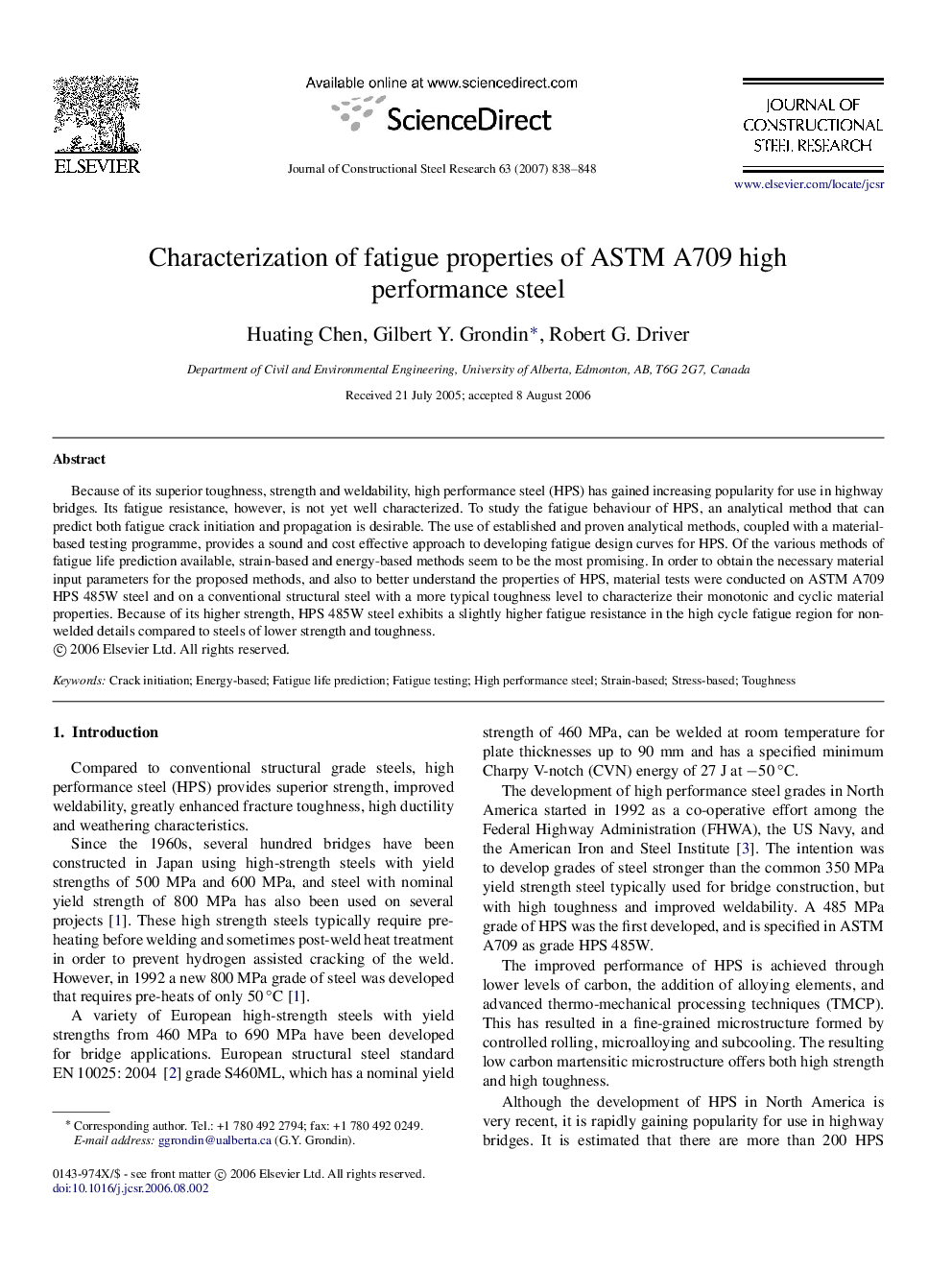| کد مقاله | کد نشریه | سال انتشار | مقاله انگلیسی | نسخه تمام متن |
|---|---|---|---|---|
| 286081 | 509234 | 2007 | 11 صفحه PDF | دانلود رایگان |

Because of its superior toughness, strength and weldability, high performance steel (HPS) has gained increasing popularity for use in highway bridges. Its fatigue resistance, however, is not yet well characterized. To study the fatigue behaviour of HPS, an analytical method that can predict both fatigue crack initiation and propagation is desirable. The use of established and proven analytical methods, coupled with a material-based testing programme, provides a sound and cost effective approach to developing fatigue design curves for HPS. Of the various methods of fatigue life prediction available, strain-based and energy-based methods seem to be the most promising. In order to obtain the necessary material input parameters for the proposed methods, and also to better understand the properties of HPS, material tests were conducted on ASTM A709 HPS 485W steel and on a conventional structural steel with a more typical toughness level to characterize their monotonic and cyclic material properties. Because of its higher strength, HPS 485W steel exhibits a slightly higher fatigue resistance in the high cycle fatigue region for non-welded details compared to steels of lower strength and toughness.
Journal: Journal of Constructional Steel Research - Volume 63, Issue 6, June 2007, Pages 838–848